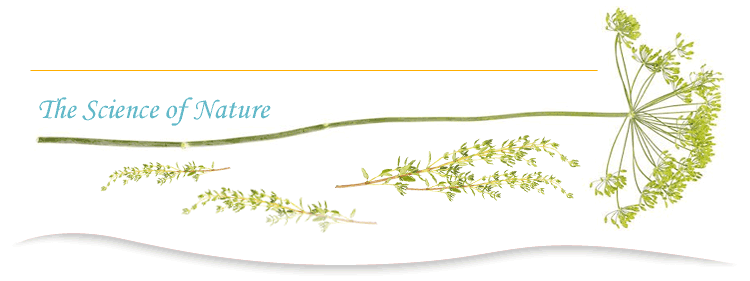

Vitamin K
Description
There are two main forms of vitamin K: phylloquinone, which is mainly found in green leafy vegetables, and menaquinone, which is produced by intestinal flora (bacterias).
Function
Vitamin is important for the synthesis of proteins involved in formation of prothrombin, and other proteins essential for blood clotting.
Deficiency
Deficiency is seen in as many as 50% of newborn babies and is associated with hypoprothrombinemia which can lead to impaired blood clotting and the development of internal bleeding and ecchymoses. Deficiency may also be seen in prolonged antibiotherapy, which may deplete the intestine of vitamin K producing bacteria.
Sources
Vitamin K is mainly found in green leafy vegetables such as spinach, broccoli and Brussels sprout. In many Western countries, it is also given to neonates on a routine basis in order to prevent neonatal hypoprothrombinemia.
Toxicity
Vitamin K, in its natural form phylloquinone, has not been showed to be toxic in high doses. Menadione, which is a synthetic form of vitamin K may be toxic in high doses but can normally not be obtained over-the-counter in Canada or the US.
Important notice: please click here.
I want to learn more
Additional Sources of Information:
Scientific References
Books
Vitamin K. Ferland G. In: Bowman BA, Russell RM, eds. Present Knowledge in Nutrition. 9th ed. Volume 1. Washington, D.C.: ILSI Press; 2006:220-230.
Vitamin K. Olson RE. In: Shils M, Olson JA, Shike M, Ross AC, eds. Modern Nutrition in Health and Disease. 9th ed. Baltimore: Lippincott Williams & Wilkins; 1999:363-380.
Vitamin K. Suttie JW. In: Shils ME, Shike M, Ross AC, Caballero B, Cousins RJ, eds. Modern Nutrition in Health and Disease. 10th ed. Baltimore: Lippincott Williams & Wilkins; 2006:412-425.
Vitamin K. Food and Nutrition Board, Institute of Medicine. In Dietary Reference Intakes for Vitamin A, Vitamin K, Arsenic, Boron, Chromium, Copper, Iodine, Iron, Manganese, Molybdenum, Nickel, Silicon, Vanadium, and Zinc. Washington, D.C.: National Academy Press; 2001:162-196. (National Academy Press)
Scientific Articles
Conversion of phylloquinone (Vitamin K1) into menaquinone-4 (Vitamin K2) in mice: two possible routes for menaquinone-4 accumulation in cerebra of mice. Okano T, Shimomura Y, Yamane M, et al. J Biol Chem. 2008;283(17):11270-11279.
[Abstract]
Dietary intake and adequacy of vitamin K. Booth SL, Suttie JW. J Nutr. 1998;128(5):785-788.
[Abstract]
Vitamin K-dependent biosynthesis of gamma-carboxyglutamic acid. Furie B, Bouchard BA, Furie BC. Blood. 1999;93(6):1798-1808.
[Abstract]
The roles of vitamins D and K in bone health and osteoporosis prevention. Shearer MJ. Proc Nutr Soc. 1997;56(3):915-937.
Vitamin K: a practical guide to the dietary management of patients on warfarin. Booth SL, Centurelli MA. Nutr Rev. 1999;57(9 Pt 1):288-296.
[Abstract]
Skeletal functions of vitamin K-dependent proteins: not just for clotting anymore. Booth SL. Nutr Rev. 1997;55(7):282-284.
[Abstract]
The vitamin K-dependent proteins: an update. Ferland G. Nutr Rev. 1998;56(8):223-230.
[Abstract]
Vitamin K-dependent proteins in the developing and aging nervous system. Tsaioun KI. Nutr Rev. 1999;57(8):231-240.
[Abstract]
Current concepts and controversies in the use of vitamin K. Drugs. Thorp JA, Gaston L, Caspers DR, Pal ML. 1995;49(3):376-387.
[Abstract]
The risk of childhood cancer after neonatal exposure to vitamin K. Klebanoff MA, Read JS, Mills JL, Shiono PH. N Engl J Med. 1993;329(13):905-908.
[Abstract]
Administration of vitamin K to newborn infants and childhood cancer. Ekelund H, Finnstrom O, Gunnarskog J, Kallen B, Larsson Y. BMJ. 1993;307(6896):89-91.
[Abstract]
Vitamin K and childhood cancer: analysis of individual patient data from six case-control studies. Roman E, Fear NT, Ansell P, et al. Br J Cancer. 2002;86(1):63-69.
[Abstract]
Controversies concerning vitamin K and the newborn. American Academy of Pediatrics Committee on Fetus and Newborn. Pediatrics. 2003;112(1 Pt 1):191-192.
[Abstract]
Vitamin K prophylaxis for premature infants: 1 mg versus 0.5 mg. Costakos DT, Greer FR, Love LA, Dahlen LR, Suttie JW. Am J Perinatol. 2003;20(8):485-490.
[Abstract]
Vitamin K status of premature infants: implications for current recommendations. Kumar D, Greer FR, Super DM, Suttie JW, Moore JJ. Pediatrics. 2001;108(5):1117-1122.
[Abstract]
Vitamin K intake and hip fractures in women: a prospective study. Feskanich D, Weber P, Willett WC, Rockett H, Booth SL, Colditz GA. Am J Clin Nutr. 1999;69(1):74-79.
[Abstract]
Dietary vitamin K intakes are associated with hip fracture but not with bone mineral density in elderly men and women. Booth SL, Tucker KL, Chen H, et al. Am J Clin Nutr. 2000;71(5):1201-1208.
[Abstract]
No effect of vitamin K1 intake on bone mineral density and fracture risk in perimenopausal women. Rejnmark L, Vestergaard P, Charles P, et al. Osteoporos Int. 2006;17(8):1122-1132.
[Abstract]
Association of dietary and biochemical measures of vitamin K with quantitative ultrasound of the heel in men and women. McLean RR, Booth SL, Kiel DP, et al. Osteoporos Int. 2006;17(4):600-607.
[Abstract]
Role of vitamin K in bone metabolism. Vermeer C, Jie KS, Knapen MH. Annu Rev Nutr. 1995;15:1-22.
[Abstract]
Vitamin K and the prevention of fractures: systematic review and meta-analysis of randomized controlled trials. Cockayne S, Adamson J, Lanham-New S, Shearer MJ, Gilbody S, Torgerson DJ. Arch Intern Med. 2006;166(12):1256-1261.
[Abstract]
Vitamin K and the prevention of fractures. Tamura T, Morgan SL, Takimoto H. Arch Intern Med. 2007;167(1):94; author reply 94-95.
[Abstract]
Vitamin K2 supplementation improves hip bone geometry and bone strength indices in postmenopausal women. Knapen MH, Schurgers LJ, Vermeer C. Osteoporos Int. 2007;18(7):963-972.
[Abstract]
Vitamin K1 supplementation retards bone loss in postmenopausal women between 50 and 60 years of age. Braam LA, Knapen MH, Geusens P, et al. Calcif Tissue Int. 2003;73(1):21-26.
[Abstract]
Two-year randomized controlled trial of vitamin K1 (phylloquinone) and vitamin D3 plus calcium on the bone health of older women. Bolton-Smith C, McMurdo ME, Paterson CR, et al. J Bone Miner Res. 2007;22(4):509-519.
[Abstract]
Effect of vitamin K supplementation on bone loss in elderly men and women. Booth SL, Dallal G, Shea MK, Gundberg C, Peterson JW, Dawson-Hughes B. J Clin Endocrinol Metab. 2008;93(4):1217-1223.
[Abstract]
Vitamin K1 intake and coronary calcification. Villines TC, Hatzigeorgiou C, Feuerstein IM, O'Malley PG, Taylor AJ. Coron Artery Dis. 2005;16(3):199-203.
[Abstract]
Vitamin K intake and calcifications in breast arteries. Maas AH, van der Schouw YT, Beijerinck D, et al. Maturitas. 2007;56(3):273-279.
[Abstract]
Vitamin K intake and osteocalcin levels in women with and without aortic atherosclerosis: a population-based study. Jie KS, Bots ML, Vermeer C, Witteman JC, Grobbee DE. Atherosclerosis. 1995;116(1):117-123.
[Abstract]
Role of vitamin K and vitamin K-dependent proteins in vascular calcification. Schurgers LJ, Dissel PE, Spronk HM, et al. Z Kardiol. 2001;90 Suppl 3:57-63.
[Abstract]
Novel conformation-specific antibodies against matrix gamma-carboxyglutamic acid (Gla) protein: undercarboxylated matrix Gla protein as marker for vascular calcification. Schurgers LJ, Teunissen KJ, Knapen MH, et al. Arterioscler Thromb Vasc Biol. 2005;25(8):1629-1633.
[Abstract]
The Circulating Inactive Form of Matrix Gla Protein (ucMGP) as a Biomarker for Cardiovascular Calcification. Cranenburg EC, Vermeer C, Koos R, et al. J Vasc Res. 2008;45(5):427-436.
[Abstract]
Effects of a hydrogenated form of vitamin K on bone formation and resorption. Booth SL, Lichtenstein AH, O'Brien-Morse M, et al. Am J Clin Nutr. 2001;74(6):783-790.
[Abstract]
The importance of menaquinones in human nutrition. Suttie JW. Annu Rev Nutr. 1995;15:399-417.
[Abstract]
K and Bone Turnover in Postmenopausal Women. National Institutes of Health. Vitamin ClinicalTrials.gov [Web page]
Effect of vitamin E supplementation on vitamin K status in adults with normal coagulation status. Booth SL, Golly I, Sacheck JM, et al. Am J Clin Nutr. 2004;80(1):143-148.
[Abstract]
Coagulopathy associated with vitamin E ingestion. Corrigan JJ, Jr., Marcus FI. JAMA. 1974;230(9):1300-1301.
[Abstract]